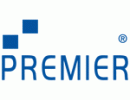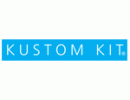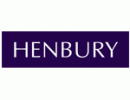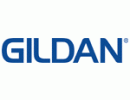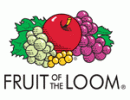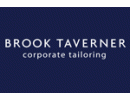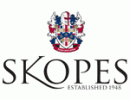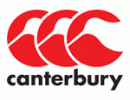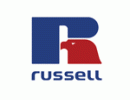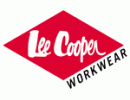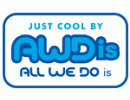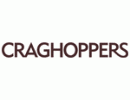Technical Terms
3M Scotchlite
A highly reflective material which is used extensively in protective garments. This material exceeds the requirements for reflexivity in the European standard, EN471.
Abrasion Resistance
Abrasion Resistance - The degree by which a fabric is able to withstand loss of appearance through surface wear, rubbing, chafing, and other frictional actions.
Absorbency
Absorbency - The ability of a fabric to take in moisture. Absorbency is a very important property, which effects many other characteristics such as skin comfort, static build-up, shrinkage, stain removal, water repellency, and wrinkle recovery.
Adjustable Cuffs
Dual buttoning of the cuff giving optional fastening for extra comfort.
Annure
A raised satin motif on a plain rib construction
Anti Pill
Surface of the fabric is treated to reduce the effects of pilling. Particularly in the case of fleece material, where the fabric can age prematurely & 'bobbles' of material matt on the surface, giving a very patchy look.
Aplaca
A natural hair fibre from the Aplaca sheep, a member of the llama family. It is a fine fibre, silk-like, soft, lightweight and warm. Has much luster like Mohair
Aramid (fibre)
A man-made fibre composed of synthetic linear macromolecules which have in the chain recurring amide groups, at least 85% of which are joined directly to two aromatic rings, and in which imide groups may be substituted for up to 50% of the amide groups. (
Auto Lock Zip
A small spring is built into the zip to stop it from sliding down.
Ayers Rock
An exciting brand of leisure & outerwear garments, which ooze innovative design, exception styling with attention to detail. Clothing suited to many markets... Stands out from the crowd
Barathea
A rib weave usually done in a minute brick fashion giving a pebbly appearance.
Basket Weave
A variation of the plain weave, where 2 or more warp yarns and 2 or more filling (weft) yarns are treated as 1 unit in the weaving process. The Oxford cloth is an example of the basket weave.
Batlk
A method orginated in Java of resist dyeing which employs wax as the resist. The pattern is covered with wax. and the fabric is then dyed, producing a white design on a dyed ground. The waxed patterns will not take the dye, and the wax is removed after dyeing. The process is repeated to obtain multicolored designs. The effect is sometimes imitated in machine prints
Beechfield
Beechfield 2006 has a total of 8 brand new lines, including a trendy Pro-style half mesh and “Trailblazer“ sun visors and knitted hats. Bright new colourways in your favourite styles complete your best ever headwear collection.
Birdseye
A cloth with smooth clear finish with small diamond-shaped figures with a dot in the centre of each
Blend
The combination of two or more types of staple fibers and/or colors in one yarn. Blends are sometimes so intimate that It is difficult to distinguish component fibers in yarn or fabric. A highly sophisticated textile art, blending today is creating new fabric types, performance characteristics, and dyeing and finishing effects.
Boucle
Plain weave using plied or uneven yarns with loop surface, giving a rough appearance to the face of the cloth.
Breathable fabrics
Breathable waterproofs are made with fabrics which have had coatings applied to them which not only keep the rain out but also help to move moisture from the inside of the garment to the outside. This process, known as wicking, is achieved on a molecular level using a combination of hydrophilic (water-loving!) molecules, which help to soak the moisture up, and hydrophobic (water-hating) molecules, which push it away. The constant "war" between these two sets of molecules, together with the pressure created within a garment when you wear it, helps to push moisture out, away from the body, to the surface of the garment, where air moving across the garment as you move takes it away. There are many different forms of breathable coating on the market - some have been developed by the clothing manufacturers themselves, such as Isotex on Regatta clothing, while some (eg. Gore-tex) are used for a variety of brands.
Brocatelle
A tightly woven jacquard fabric with a warp effect in the figure which is raised to give a puffed appearance. The puff effect is created by several kinds of fillings', tension weaving of a linen: or nyion which shrinks after a heat process.
Brocid
Multicolored jacquard woven fabric with floral or figured pattern emphasized by contrasting colors. The background may be either satin or twill weave.
Brook Taverner
Company Profile Established in 1912, Brook Taverner is one of the oldest and best-known names in the textile industry. Based in Huddersfield and operating from modern custom-built premises, they are ideally situated in the centre of Yorkshire's textile heartland. Their ranges include hundreds of fine Fabrics, Jackets, Suits, Trousers, Skirts, Dresses and Blouses. Whether you are searching for an elegant Dinner Suit or a Corporate Uniform Solution for your business, you can be sure that Brook Taverner will have the answer. Their client base is extensive and spans from the High Street tailor to multi-national blue chip organisations, each and every customer receiving service of the highest calibre and goods of the finest quality. Their experienced sales team are always available to process your orders and to deal with any requests you may have. Using their state-of-the-art computer system, you can be assured that your call will be dealt with quickly and efficiently. Should you require a non-standard item or would like a garment modifying to your individual needs, then their new CAD (computer-aided design) studio will be pleased to help you. 'Quality' is a word that forms part of their very philosophy. Before any fabric or garment is offered for sale, it must first undergo and pass a rigorous testing regime. To further reinforce their total commitment to quality, they have held the prestigious 'ISO9001' award for several years. They are currently working towards the next revision of this award, ensuring that their reputation for total quality will be further enhanced.
Cashmere
A natural fibre from the Cashmere goat. Has a very soft and silky finish. Very light weight. Usually blended with wool, especially for suitings, to improve wear.
Catfonic
Cationic dyeable fiber is the newest tool in the fashion designer's lot, It's a dye technique that allows certain fibers (like nylon, or polyester)to take deep and brilliant colors. When catonic fiber is fixed with conventional fiber, various multicolors and cross-dye effects can be achieved from a single dye bath.
Chenille Fabric:
A fabric woven with chenille yarns which have a pile effect similar to velvet, and when woven through various warps can create a pile-like velvet, or. if woven on a jacquard loom, can look similar to a cut velvet
Chevron
Broken twill or herringbone weave giving a chevron effect, creating a design of wide "Vs " across the width of the fabric. See" Herringbone. "
Chintz
A plain tightly woven cotton fabric with the fine yarns and processed with a glazed finish. Used as a plain dyed fabric or a printed fabric. The term is sometimes used for ungazed fine count cottons. Converting the processes by which greige goods are made into finished salable goods
Chocolate stains
Chocolate Always read and follow the care instructions and any warnings on the garment label. And, follow the General Rules for stain removal. Treat the stain with a prewash spray or pretreat with a product containing enzymes. Rub with heavy-duty liquid detergent. Launder. If stain remains, relaunder with bleach that is safe for the fabric. If stain still remains, treat as a "Dye Stain."
Coats Epic
A thread that consists of a core polyester thread around which is spun another polyester fibre. This combination results in a high tensile thread used for expample in seams which require maximum durability.
Coffee & tea stains
Always read and follow the care instructions and any warnings on the garment label. And, follow the General Rules for stain removal. Saturate the stain with a pretreatment stain remover. Rub the stain with a heavy-duty liquid detergent and launder in hottest water safe for the fabric. Do not use soap (bar, flake, or detergents containing natural soap), since soap could make stain permanent or at least more difficult to remove. If stain remains launder with bleach safe for the fabric
Coffee stains
Coffee, Tea Always read and follow the care instructions and any warnings on the garment label. And, follow the General Rules for stain removal. Saturate the stain with a pretreatment stain remover. Rub the stain with a heavy-duty liquid detergent and launder in hottest water safe for the fabric. Do not use soap (bar, flake, or detergents containing natural soap), since soap could make stain permanent or at least more difficult to remove. If stain remains launder with bleach safe for the fabric.
Combed Cotton
When any fabric is combed the shortest fibres are removed during the production process. The end reslut of this is a soft strong and high qulaity yarn.
Combing
An additional step beyond carding to straighten and arrange fibres in parallel form. Also removes shorter fibres from the yarn, helping to produce a high quality yarn with excellent strength, fineness and uniformity.
Comfort Finish Cuff Seams
Cuff seam is sewn flat for added comfort
Control Glove
The Control Glove is an innovative Engineered Fibre Structures development which has multiple applications across a range of sectors. It can be used to control computers, games consoles, machines and electrical and electronic devices and equipment. The Control Glove can be used in patient rehabilitation in healthcare, as a controller in video games, as a computer interface, and as a communications device, for industrial, security and military applications. The Control Glove is activated and operated simply by the wearer and can send multiple commands via Bluetooth to the computer or device being controlled. It is made from a lightweight textile material with stretch, which makes it not only comfortable to wear, but allows the user complete dexterity when executing complex command sequences
Corduroy
A pile fabric with the pile usually cut into ridges. The fabric was developed in France and for years was a specialty of royally, thus its name which means cord of the king.
Cotton
Cotton remains a soft and comfortable natural material and extensively used in clothing. Its main advantage is that it does not melt when exposed to heat or flames and that it is difficult to set fire to. Heavy duty cotton twill is extra sturdy and durable.
Crewel
Chain stitch embroidery made with a fine, loosely twisted, two-ply worsted yarn on a plain weave fabric. Done by hand, for the most part, in the Kashmir Province of India and in England
Damak:
Brought to Damscus by Marco Polo in 13th Century. A jacquard woven fabric with floral or geometric patterns created with different weave effects. Can be woven self-tone: one color warp: different color filling. Distinguished from brocade bacause face of fabric is flatter.
Danish Original® Beaver™ Nylon
Source - Result clothing Danish Original® Beaver™ Nylon Danish Original® Beaver™ Nylon containing 50% Cotton / 50% Polyamid. Fluorcarbon finish. The ideal fabric for workwear. An unique construction with high tear strength combining a hard wearing durable Nylon on the outside and Cotton on the inside - making this quality extremely strong and comfortable to wear. Fluorcarbon finish gives the fabric an exceptionally durable water/soil resistant quality. For retaining the excellent quality of the Fluorcarbon treatment use low iron. · Superior hardwearing qualities · Soil resistant · Comfortable · Water and oil repellent
Denim
Denim is a coarse twilled cloth, usually cotton, traditionally used for jeans, overalls, and work uniforms. One school of thought is that denim cloth was invented in the town of Nîmes, France, hence ‘de Nîmes’ (meaning from Nîmes). It was known in France even before the 17th Century. Denim moved across the Atlantic Ocean in the late 1700s and American mills started to produce their own denim fabric. American President George Washington toured a Massachusetts factory in the 1780s and was shown the machinery that wove this fabric. That same year, one of the first printed references to the word "denim" in the United States appeared in a Rhode Island newspaper. Denim, at that time, was reserved for work clothes, when both durability and comfort were needed. After World War II, denim pants became less about work wear and more closely aligned with the leisure time of 1950’s America, and it was around this time that Levi Strauss & Co. began selling its products nationally. Denim and its texture are still ideal for a more contemporary and informal work wear style. We have been able to source a denim which does not shrink or fade, thereby ensuring durability and consistency across staff.
Direct Print
Pattern and ground color printed on fabric in the colors desired, as opposed to extract printing done on a dyed cloth. Cretonne is an example of a direct print
Dobby Fabric
With geometric figures woven in a set pattern. Similar to, but more limited, more quickly woven, and cheaper than jacquards, which require elaborate procedures to form patterns.
Dobby Loom
A type of loom on which small, geometric figures can be woven in as a regular pattern. Originally this type of loom needed a "dobby boy" who sat on the top of the loom and drew up warp threads to term a pattern. Now the weaving is done entirely by machine. This loom differs from a plain loom in that it may have up to thirty-two harnesses and a pattern chain and its expensive weaving.
Double Roll Tip Collar & Cuffs
The edge is knitted with double thickness in order to retain a neater shape.
Draw cord
Drawcord hem - Non-elasticated cord hem usually tightened using a toggle, especially on jackets & fleeces
Drop Tail
The garment is longer at the back to ensure it stays tucked in ( especially in mens shirts).
Drying Times
Drying Always check the care label to see whether a garment can be tumble dried. When tumble drying the following is recommended: Garment Type - Drying Time Cotton Garments - 50 - 100 minutes Cotton Polyester - 35 - 55 minutes Heavy Synthetics - 45 - 65 minutes Light Synthetics - 30 - 40 minutes Airing Dry - 20 - 30 minutes
Dye Sublimation
A method introducing a colour design into a garment or bother object. The item to be decorated has a polyester coating which accepts dye when exposed to heat and/or pressure. In this way clothing, mugs and other items can be used to carry full colour motifs and similar advertising logos.
Dyeing of Textiles
The coloring of greige goods or fibers with either natural or synthetic dyes. This may be done in many different ways depending on the type of fabric (or fiber), the type of dye and the desired result
Easy Iron
A special finish to the surface of the garment which reduces creases and minimises ironing.
Elastane
Elastane is a manmade fibre which is highly flexiable. When added in small amounts to cotton yarn the reslut is a much more stretchy but stable garment; used particularly in fitted T shirts.
Embroidery
The use of mulitple cotton or polyester threads to generate a logo or image.
EN374
Standard test for gloves subject to chemicals & microorganisms.
EN388
Stanard test for gloves subject to mechanical hazards such as abrasion, blade cut, tear & puncture.
EN420
Staddard applicable to the wearing of protective gloves ( PPE regulations) 1992.
EN420 Category 1
Hand protection against minimal/superfical risk ( ie gardening).
EN420 Category 2
Hand protection required where there is risk of mechanical hazard and no risk of irreversible damage. Products to be tested by third party.
EN420 Category 3
Hand protection where there is risk of mortal danger that may seriously harm. Conditions covered may include high temperatures, radiation, flames or molten metal splash. Products to be tested by third party.
EN470-1
The standard applicabale to protective clothing for use in welding and allied processes.
EN471
EN471 is the recognised standard for hiviz clothing. The class number indicates the typical application for the garments when in use. EN471 Class 1 Lowest Protection Level. Reflective hi viz clothing is the minimum specification for garments to be worn by persons working on a private road. Bands of reflective material at least 50mm wide. Min backbround matertial 0.14m2. Min retroreflective mateial 0.10m2. EN471 Class 2. Intermediate Protection Level. Hi viz workwear garments are required for any persons working on or near A and B class roads. Bands of retroreflective material not less than 50mm wide. Min background material 0.5m2. Min background retroreflective material 0.13m2. EN471 Class 3. Highest Protection level. High visibility garments provide the highest level of protection required for persons working on or near motorways, dual carriageways or airports. Bands of retroreflective material not less than 50mm wide. Min background material 0.80m2. Min background retroreflective material 0.2m2.
EN531
Standard applicable to clothing for industrial workers exposed to heat ( including fire fighters).
EN533
EN533 is the recognised standard for flame retardant workwear.
Enzyme Wash
A washing process that gives the fabric its unique ( faded) colour and soft finish.
Fabric Link - Textile Dictionary
A complete dictionary online of all textile terms - ttp://www.fabriclink.com/Dictionaries/Textile.cfm#S
Fiber
Any tough substance, natural or man-made, composed of thread-like tissue capable of being made into yarn.
First Corporate
A supplier of ladies blouses based in the UK. Noted particularly for their range of plain and patterned blouses as well as their extensive selection of styles, fitted and unfitted. In addition they offer a very large range of sizes.
Flame resistant
A term used to describe fibres, yarns or fabrics which resist burning
Flame retardant
A substance added or a treatment applied to a material in order to to suppress, significantly reduce or delay the propagation of flame.
Flannel
A medium-weight, plain or (usually) twill weave fabric. Made in either woolen (carded) or worsted (carded & combed) yarns. The face often has a slight nap (or raised surface) giving it a soft feel and appearance. Worsted flannel very commonly used in men's suits, is hard wearing and presses well.
Flat Lock Stitching
Decorative top stitching
Front Row
Front Row’s outstanding active leisurewear collection includes their legendary long & short sleeve rugby-style shirts, superb casual cotton coordinates and now fleeces too.
Fruit of the Loom
With over 150 years experience in product innovation, Fruit of the Loom are committed to providing a wide range of promotional and corporate clothing, designed to meet the highest expectations of style, quality and performance at an affordable price.
Fruit of the Loom
One of the largest suppliers of clothing in the workwear/casual clothing market. Previously branded as Screenstars. Noted for their range of T shirts, sweatshirts and other related garments.
Fused Collar
An Interlining is fused into the collar to help retain its shape.
Half Moon Yoke
Styling detail sewn on to the back neck of the garment.
Hanes
The “Fashion and the Passion” stands for quality and innovation. Defines styles, concepts and collections like no other brand. Whether itÃs for basics or fashion, colour or fit.
Hanes
The Hanes brand was born in Winston-Salem, North Carolina and has grown to be one of the largest apparel brands in the world. With a European headquarter in Aachen (Germany) and a central dispatching center in Ghent (Belgium) Hanes has assumed leadership on the European printables market offering the industry an impressive collection of T-shirts, polos, sweats, pullovers, shirts and blouses perfectly tailored to the taste of today’s fashion conscious consumers.
Harris Tweed
A hand woven cloth made only on the islands of the Outer Hebrides off the north coast of Scotland.
Herringbone
A cloth where the twill is reversed at regular intervals producing a zig-zag effect.
Interactive jacket
Jacket designed esigned to be able to zip a fleece jacket inside for added warmth. Sometimes also referred to as '3 in 1'.
Interlock
A style of producing knitted fabrics where the knit stitches are interlocked.
Ironing
Ironing The iron symbols advise the optimum temperature at which to iron. The dots represent the recommended iron temperature; the more dots the hotter the iron. Iron Symbol with one dot - 120C/248F (Cool) Iron Symbol with two dots - 160C/320F (Warm) Iron Symbol with three dots 210C/410F (Hot) Do not Iron Symbol Do not Iron / Steam Treatment is not allowed · Iron each garment on recommended setting as per the care label. · Do not iron directly onto a printed garment. Always iron on the reverse. · When ironing dark garments avoid "iron shine" by either pressing on the inside of the fabric or through a damp cloth. This is not applicable if using a steam iron.
Jacquard
An old term relating to the method of introducing a pattern or design into a garment or fabric. Originally developed as a method or mechanism attached to say a loom or other weaving device.
Jersey Knit
A style of making fabric which is softer and breathable, with extra 'give'. The majority of T shirts tend to be of Jersey knit construction.
Jerzees Colours
Jerzees Colours is offering a broad range of stylish promotional products with fashionable cuts and fabrics. Fashion is fun with Jerzees Colours range!
kustom Kit
The Kustom Kit brand offers the finest and most comprehensive collection of corporate and promotional clothing, workwear and teamwear for men and women, in addition to a great range of kidswear for school and play.
Kustom Kit
Charterhouse Holdings Plc specialise in providing corporate, promotional and workwear for men, women and children. The company operates through two divisions, Kustom Kit who provide the finest and most comprehensive range of clothing for the workplace, and Xpres who have over 20 years experience at the cutting edge of the personalisation business. Kustom Kit offers an excellent range of garments in a wide variety of colours and sizes, ensuring that comfort and fit are not compromised, and at prices which represent the greatest value for money. Charterhouse have built the Kustom Kit brand based upon the philosophy that, when selecting corporate clothing, companies need to be sure it will reflect the quality, professionalism and integrity of their organisation. Using the very finest fabrics, it is a range of clothing that will match the corporate values of their customers. Kustom Kit has achieved an enviable reputation as the brand of choice for quality, innovative corporate, promotional and work wear.
Kustom Kit Size Charts
The size chart is available on the Kustom Kit site - http://www.kustomkit.com/EN/information/measuringguide
Lycra
Lycra is a very stretchy man made fibre, which came to public attention in Lyrca running shorts and other sportswear. Introduced in 1958 it is a patented fibre available only from Dupont.
McForsum
McForsum has developed into one of the most respected & well-known golf brands in the UK promotional industry. Choose from a comprehensive range of quality, value for money garments, ideal for any corporate event, scheme or uniform.
Melton
A heavyweight and tightly woven cloth, used mainly for coats.
Merino
A type of wool from Merino sheep. The fibre is extra fine and produces a very fine yarn, usually used in very high quality worsted cloths
Mohair
A natural fibre from the Angora goat. Stronger than wool, it is smooth, glossy and wiry. Often blended with wool to make a strong, lightweight and smooth cloth for summer suits.
Peach Finish
Fabric is lightly brushed to give a softer feel.
Phase One
High quality performance sportswear for men, women and children, delivered by a leading manufacturer. Practical apparel for many sporting fields.
Pill, pilling
The entangling of fibres during washing, dry cleaning, testing or in wear to form balls or pills which stand proud of the surface of a fabric and which are of such density that light will not pass through them (so that they cast a shadow).
Piqué, (or marcella) This refers to a weaving style, normally used with cotton yarn, which is characterized by raised parallel cords or fine ribbing. Twilled cotton and corded cotton are close relatives.
The weave closely associated with white tie, and some accounts even say the fabric was invented specifically for this use. It holds more starch than plain fabric, so produces a stiffer shirt front. Marcella shirts then replaced earlier plain fronts, which remain a valid alternative. Marcella's use then spread to other parts of the dress code and it is now the most common fabric used in the tie and waistcoat of white tie. A knit fabric with a similar texture is used in polo shirts.
Marcella weaving was developed by the Lancashire cotton industry in the late 18th century as a mechanised technique of weaving double cloth with an enclosed heavy cording weft.[1] It was originally used to make imitations of the corded Provençal quilts made in Marseille, the manufacture of which became an important industry for Lancashire from the late 18th to the early 20th century.[1] The term "marcella" is one of a number of variations on the word "Marseille".[2]
Pique fabrics are a type of dobby construction. Piques may be constructed in various patterns such as cord, waffle, honeycomb and birdseye piques. These fabrics require the addition of extra yarns, called stuffer yarns. These stuffer yarns are incorporated into the back of the fabric to give texture and added depth to the fabric design. Some piques may be made using the Jacquard attachment on the loom. Although made of 100% cotton to-day, cotton-silk and even pure silk versions were made in the past and in a variety of weaves. [3]
Plain weave
The most basic weave structure where the warp and weft yarns alternate passing over and then under one another.
Polar fleece
A fleece-back jersey fabric.
Polyester
Polyester is a man made material which is woven into fabric. Relative to cotton polyester is hard wearing and not subject to skrinking. Its feel in clothing though can be very uncomfortable and for example subject to static electricity. Another major feature is the ability of the polyester yarn to absorb colour dyes so there is a much higher degree of colourfastness.
Polyester/Cotton
A mix of the two materials that brings out the best features of both. The breathability of cotton combined with the durability of polyester results in garments that keep their shape and colour longer whilst being comfortable to wear.
Polymer:
A long molecule made up from many smaller repeat molecules; the following polymers are the main ones used to make synthetic fibres: polyacrylic; polyamide (nylon); polyester; polypropylene; and polyurethane.
Poplin
A plain-weave cotton-type fabric with weftways ribs and a high warp sett.
Premier
The market leader in fashionable, functional corporate, hospitality and work wear. Premier continually prides itself on good-looking clothes that stay that way for longer thanks to superior fabrics.
Quadra
Bags & holdalls , carriers etc The ultra-comprehensive market leading Quadra range is further enhanced by the fantastic Desert Canvas collection, a Cooler Backpack and a further 2 Hi-Viz bags for the school market
Raglan sleeves
A style of construction where the armhole seam runs from under the arm across the outer chest at approx 45% to the neckline.
Razorlight choose ethical tour T-shirts from Epona
Razorlight choose ethical tour T-shirts from Epona Clothing Yet another band have chosen Epona Clothing’s Fairtrade organic cotton T-shirts for their promotional merchandise. Razorlight joins the growing list of groups that includes Coldplay that are choosing ethical alternatives to conventional tour T-shirts. Other customers of Epona’s T-shirts and hooded tops include the charities Christian Aid, Amnesty International Ireland and the Rainforset Foundation. Epona was one of the first UK companies to produce clothing from certified Fairtrade cotton since this was launched by the Fairtrade Foundation in November 2005. The market for Fairtrade products rose by 40 per cent in 2005 to more than £200 million, and 33 per cent of shoppers now describe themselves as ‘conscientious consumers’. The demand for ethically produced clothing, says Epona, is now worth £43 million
Regatta
Regatta is owned by the Black family, one of Europe’s leading names in outdoor clothing, with over 80 years and 3 generations experience in making high quality waterproofs. They established the Regatta Brand in 1981 using their vast experience to create one of the most widely sold outdoor brands available in Europe today. Over the years Regatta has developed ranges for the high performance outdoor user under the X-ert Performance label, travel clothing, nautical clothing as well as easy-wear outdoor clothing for the less experienced user. The entire family is provided for and last year saw the launch of an exciting new footwear range.
Regatta
Outdoor clothing, workwear. Regatta offers great value outdoorwear perfect for the corporate and promotional markets. As the country's biggest outdoor clothing brand we pride ourselves in the quality and style of our extensive product range.
Ringer T Shirt
A stye of T shirt where the collar and the end of the sleeves are of a different, normally contrasting, colour to the main body of the shirt.
Scotchlite
3M™ Scotchlite™ reflective material The Scotchlite™ reflective material incorporated on certain products greatly enhances your safety at night and in low visibility situations by creating an extremely bright image that motorists can see from a distance. This reflective material returns light back to the source; for example vehicle headlights. As a result, motorists and pedestrians have time to react. Scotchlite™ is a trademark of the 3M Company
Screen Printing
A method of printing onto garments or other items. Ink is forced through a screen which aloows through the ink in varying amounts onto the garment. A new screen is reuired for each colour which is applied in turn. After printing the garments will normally require drying in order to dry the ink before packing.
Self fabric Bound neck
The fabric is passed through a folder to neaten the neck ensuring an improved neack shape and comfort.
Shockcord Hem
Shockcord hem - Elasticated cord hem used to pull jackets in tight around the waist
Skopes
A major supplier of mens and ladies suits for the corporatewear market. In particular their range of menswear is extremely functional and well sold in the UK.
Slanted Placket
Corner of placket is slightly tapered to prevent curling around the collar.
Stain removal guide
A complete index of stain removal methods http://www.fabriclink.com/Stains/Washable.cfm
Stain resistance
The ability of a fabric to withstand permanent discoloration by the action of liquids. This property depends partly upon the chemical nature of the fibre but may be improved by proprietary treatments.
Stains - correction fluid
Correction Fluid, White Out® Always read and follow the care instructions and any warnings on the garment label. And, follow the General Rules for stain removal. This is a real tough one, and may be permanent. It can penetrate into the fabric and when it dries coats the fibers in a harden "plaster." Unless there are instructions on the product label, you can try specific stain removal products available at the grocery or drug store, such as Carbona's "Stain Devils®" or take the stain to your dry cleaner and tell them to treat it as a paint stain.
Stains - fruit juices
Fruits and Fruit Juices Always read and follow the care instructions and any warnings on the garment label. And, follow the General Rules for stain removal. Launder with detergent in hottest water safe for the fabric. Do not use soap (bar, flake, or detergents containing natural soap), since soap could make stain permanent or at least more difficult to remove. Soak tough stains for 30 minutes in 1 quart of warm water and 1 teaspoon of enzyme presoak product.
Stains - pencils
Pencil Always read and follow the care instructions and any warnings on the garment label. And, follow the General Rules for stain removal. Use a soft eraser to remove what excess lead you can. But, be careful so you do not damage or stretch the fabric. Spray the stain with a pretreatment product. Rub the area with a heavy-duty liquid detergent. Rinse and launder.
Superwash 60C
A hi tech fabric that allows the garment to be washed at up to 60C for the removal of dirt etc without effecting the shape or colour of the garment.
Superwash 60C
A hi tech fabric that allows the garment to be washed at up to 60C for the removal of dirt etc without effecting the shape or colour of the garment.
Synthetic fibres
Man-made fibres made from a polymer that has been produced artificially, in contrast to fibres made from naturally occurring polymers such as cellulose. The term synthetic fibres is also used to refer to synthetic filaments.
Taped side vents
Side vents are sewn with woven tape for added strength & appearance.
Tapered back neck
Self fabric tape attached to the neck giving a smooth and comfortable finish.
Tax Tabbing
A general term used to describe the requirement to have a business names displayed on a piece of clothing in a minimal way, sufficient to justify the 'non gift' status of the clothing.
Tear resistance
A measurement of fabric strength. Also, a property imparted by using “ripstop” yarns in close woven fabrics
Technical textiles
Textile materials and products manufactured primarily for their technical performance and functional properties rather than their aesthetic or decorative characteristics. End uses include aerospace, industrial, marine, medical, military, safety and transport textiles, and geotextiles
Technical Textiles
The term “technical textiles” was coined in the 1980s to describe the growing variety of products and manufacturing techniques being developed primarily for their technical properties and performance rather than their appearance or other aesthetic characteristics. It largely superseded an earlier term “industrial textiles” (still widely used in the USA) which had become too restrictive in its meaning to describe the full complexity and richness of this fast growing area. A major international exhibition, Techtextil, was launched in 1985 to reflect the growth of technical textiles and soon developed a simple taxonomy that has been used ever since to describe the scope of this new industry and market sector.
TEFLON
TEFLON provides excellent water and stain repellency. TEFLON does not affect the breathability of the fabric. TEFLON is durable to washing and dry cleaning, however for optimum performance after washing, a heat treatment is recommended, either tumble drying or warm (2 dot) iron. TEFLON is CFC free and dermatologically tested. DuPont is a registered trade mark for the finish
Twill weave
A weave structure where by progressively alternating the warp and weft yarns a series of diagonal lines are obtained, rising from left to right.
Twin needle stitching
Two rows of stitching at key seams for strength, style & neatness.
United Brands of Scandinavia
A subsidiary of the New Wave Group based in Sweden. Their clothing brands available in the UK include PROJOB which feature high quality workwear with a European styling.
Washing Symbols
Washing Always look for the garment care label and follow the washing instructions. Washing machines, powders and fabrics are specially manufactured to ensure that when washed at the right temperature your clothes will come out looking their best time after time. The wash tub symbol tells you the washing process to be used. 60C Washing Symbol - Spin Cotton Cycle 60C Washing Symbol - Spin Synthetic Cycle 40C Washing Symbol - Spin Cotton Cycle 40C Washing Symbol - Spin Synthetic Cycle 30C Washing Symbol - Gentle Cycle · Before washing, close all zips, undo buttons and flatten out collars and cuff. Check pockets and linings for loose or sharp objects. · Turn garments inside out to reduce abrasion so avoiding contamination by fibres from other garments during the washing cycle. · Always read the label for correct washing temperature. · Garments of similar colours can be machine washed where stated on the care label. · Do not overload the washing machine. · Always use the correct amount of detergent depending on how dirty the garments are. · Check garments regularly for marks or stains and remove as soon as possible.
Waterproof clothing
Waterproof clothing comes in two forms: breathable or non-breathable. Non-breathable waterproofs are simply either made of a waterproof fabric such as PVC or have a waterproof coating applied to them. Either way, they keep the rain out - but as you warm up when wearing them, the perspiration generated has nowhere to go, so they start to feel "sticky".
Whytes
The cotton/acrylic/polyester knit fabric gives Whytes' classic sweaters, cardigans and sweatshirts the long lasting shape and colour retention qualities loved by schools.
Worsted
The highest quality of woven cloth made from wool yarns that have been first carded and then combed. Process produces cloth of excellent strength and wear. Most commonly used in men's tailored suits.
Yarn
A generic term for a continuous strand of textile fibres or filaments in a form suitable for knitting, weaving or otherwise intertwining to form a fabric.
YKK
A market leader in the supply of zips for the clothing industry & allied markets.
Zip Off Trousers
Zip off long legs - Trouser legs that can be zipped on or off, turning the trousers into shorts for hot weather or walking through water

